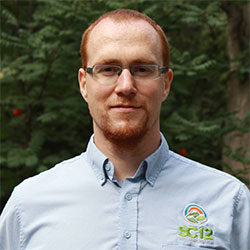
High performance computing (HPC) is the Formula 1 of computing, and the SC conference series is its race track. My first SC visit in 2004, nearly 10 years ago, was a very special experience for me. This was the first time I had a sense of HPC as an agent for change in society, rather than just as an exciting field of research. As John West mentioned in his previous post, the results of HPC are everywhere. The supercomputing conference is the yearly event where the whole community meets to exchange news, build collaborations, define research directions, and learn about technology. But SC is more than a spectacle: its technical program makes it one of the top academic conferences in the field.
I am very glad that I can bring two students, both first time attendees, to the conference this year. The conference aims to foster connections with young students at all levels, with programs like the HPC Undergrads Program, the ACM Student Research Competition, and SIGHPC's student travel grants. The programs provide a unique opportunity for students to understand how their research fits into the rest of the HPC community, and to see the things they learn about in school put into practice.
SC13 has multiple programs, sessions, and numerous associated events — too many to list them here. The technical papers program is the flagship of the conference, and SC is the conference of record for the supercomputing community. With an acceptance rate under 20%, it is not enough to have a good paper; authors accepted at SC are presenting the best papers available in the most relevant topics to our community each year. Other technical program elements are also important for our community. For example, the posters program enables attendees to connect with emerging research topics, often presented by up and coming students and young researchers who also have an opportunity to participate in the ACM Student Research Competition which is hosted at SC each year. The SRC provides young undergraduate and graduate students a platform to talk about their early research and gather feedback from the whole community, and can be an important early force in shaping careers.
Of course SC13 also has an exhibition, which this year includes over 350 vendors on three acres of floor space. This year the exhibition is also hosting a new element of the technical program: Emerging Technologies. This activity features seventeen research projects from academia, government laboratories, and industry, each of which was selected through a competitive academic peer-review process, well in the tradition of the technical program. Some of the highlights of this year's Emerging Technologies are proposals to build supercomputers out of cellphone processors, new non-Von Neumann CPU architectures called "automata processors," and novel approaches for large-scale parallel programming, debugging, and fault tolerance.
If you are attending SC13, be sure to stop by this booth for a peek at the future of computing.
Torsten Hoefler is an Assistant Professor of Computer Science at ETHZurich, chair of the SC13 Emerging Technologies program, and an elected officer of the ACM Special Interest Group on HPC.



Join the Discussion (0)
Become a Member or Sign In to Post a Comment